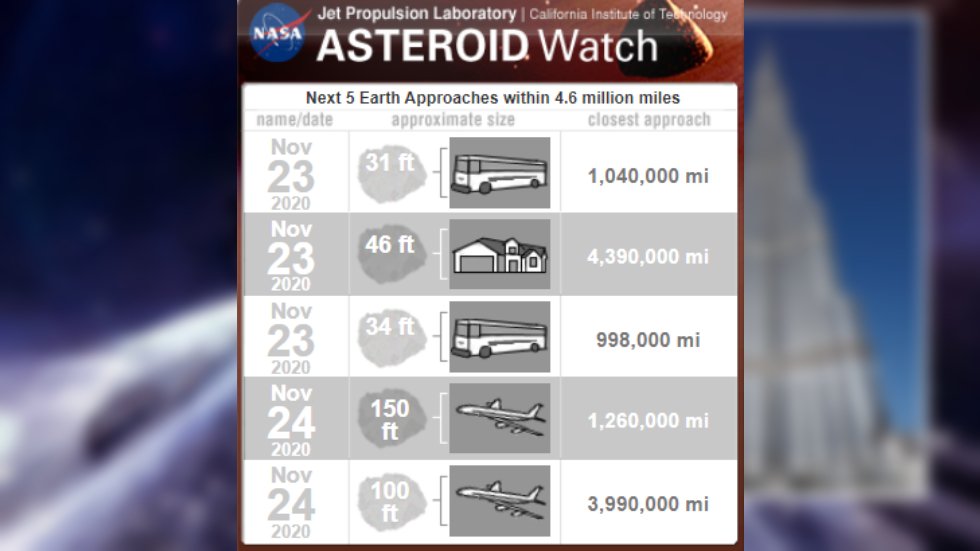Asteroid the size of Dubai’s Burj Khalifa heading towards Earth at 90,000kph

As a battered and beleaguered planet approaches the finish line of 2020, the universe appears to be playing a dark joke on humanity by sending five asteroids in two days, with a 2,700ft space rock to follow just days later.
The behemoth dubbed 2000 WO107, estimated to measure up to 0.51km in diameter, or roughly the height of Dubai’s Burj Khalifa, the tallest building in the world, will be paying Earth a visit (cosmically speaking) at 10.09am GMT (5.09am ET) on Sunday, November 29.
The visitor won’t be sticking around for long as, despite its enormous size, it is traveling at a whopping 25.07km per second – or roughly the equivalent of 90,000kph. For reference, the average bullet travels at around 4,500kph. It also won’t be visible to most Earthlings as it is set for what NASA deems a “close flyby” at a paltry 0.02876 Astronomical Units (AU) from Earth – or 2,673,409 miles.
NASA defines a Near Earth Object (NEO) as any asteroid or comet coming within 1.3 AU of Earth.
Also on rt.com NASA flag FIVE asteroids en route TODAY, as scientists mull planetary defense mission to planet-killer Apophis in 2029In the meantime, there will be plenty of activity in our cosmic backyard, with five asteroids due in the area on Monday and Tuesday alone.
On Monday three space rocks, 2020 WN (9.5m in diameter), 2020 VW2 (14m) and 2020 WC (10m) will shoot past Earth at 1.6 million kilometers, seven million kilometers, and 1.6 million kilometers respectively.
The average distance between Earth and the Moon is about 385,000km but NASA considers all objects within a 7.5 million-kilometer range (or 19.5 times the distance to the Moon) to be worthy of monitoring, just in case any succumb to a sudden course correction.

Tuesday will see the 47-meter 2017 WJ16 and 31-meter 2020 TJ8 pass the planet at two million kilometers and 6.4 million kilometers, before the next round of space rocks buzzes our planetary defenses.
NASA and other space agencies around the globe keep a watchful eye 24/7 but there’s a lot of sky to cover, so sometimes humanity misses these close flybys, as was the case with a new record-holding close flyby which took place this month.
Also on rt.com Planetary defenses MISSED asteroid flyby that came within 400km of Earth on Friday 13thLike this story? Share it with a friend!













